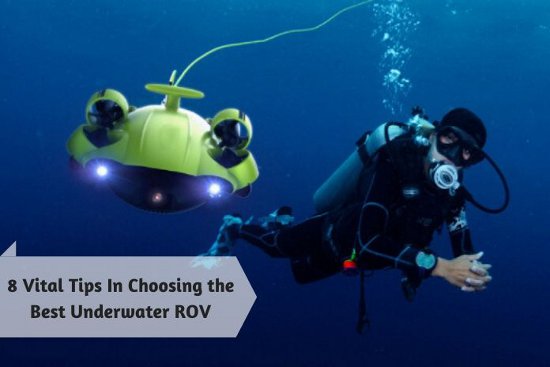The popularity of drones is on the rise both on land, air, and water. Underwater drones (ROVs) are formally known as remotely operated underwater vehicles (ROUV). They facilitate the remote exploration of marine environments, scientific research, filmmaking, and inspecting ships. Due to its propellers, they are capable of navigating through water currents. They are also equipped with incredible lighting that aids in capturing high-quality images, even in the dark, cameras, and sensors for avoiding obstacles. The following are the eight tips essential in choosing the best underwater ROV.


The Intended Use
The first thing you need to answer before buying an underwater ROV is its purpose in your life. Answering that question will help you select the machine that suits you best. An underwater ROV is best if you need to observe depths that cannot be accessed easily and when you want to watch the camera films in real-time.
Weight
Underwater ROVs come in various sizes and weights. It can be a small bag to a large vehicle. The smallest underwater ROV available is Access AC-ROV that is manufactured by AUS ROV. Your ideal machine will depend on your preference, budget, and also the intended purpose the ROV is set to perform. Larger underwater ROVs are heftier than the small ones.
Bigger ROVs usually carry out industrial and scientific missions. Micro ROVs weigh below 3kgs are mainly operated in places where a diver cannot go, such as sewers, small cavities, and pipelines. Mini ROVs weigh about 15 kgs and also used for diving; they can be operated by one person and transported using a small boat.
Quality Of The Camera
The quality of the camera relies on different factors, especially when the ROV is underwater. The resolution and the lenses matter in underwater filming. Check the speculations of the camera before buying the ROV and make sure the camera will serve its purpose efficiently.
If the ROV you pick does not come with a pre-installed camera, then ensure that you purchase a good camera to capture great videos. Session and Fusion cameras do not match with the underwater ROVs’ enclosures. With these cameras, the high frame rate makes the footage look like smooth shots with fish that are moving fast.
Controllers
ROVS typically uses one of these three types of control inputs-a physical cable, wireless, and autonomous/ direct input models. Physical cables tether the control while wireless controllers offer the easiest way to break through without much experience with setup and simple controls. However, they are less stable, reliable, and have limited range. The controller you pick will depend on your goals for the ROV. Wired controllers are more suited for advanced users because of their wide range of control options; however, they can be intimidating to inexperienced users.
Lights
Your underwater ROV will serve you better if it has good lighting, mainly if your work will involve taking photos and videos. Without proper lighting, the quality of your work will be significantly compromised. Most of the time, these machines have LED lights installed to help counter the loss of deep light underwater. The recent models have views of between 100-5000 lumens.
The Range of Depth and Propulsion of the ROV
A general underwater ROV is typically below propulsion (HP), and its standard depth underwater is about 1000 meters; however, there is one that was upgraded to 7000 meters. Light work class is usually below 50 HP and permits a maximum depth of 2000 meters. The heavy work category can go up to 3500 meters deep and support below 220 HP while the trenching ROV’s go up to 6000 meters and between 200-500 HP.
Price
Your budget contributes to the kind of purchase you make. It is usually wise to set your budget before going on a shopping trip to prevent overspending. Its features determine the price of a particular underwater ROV, for instance, the quality of the camera and materials, the length of its wire, and other additional features. The prices lie between $1000 to more than $4000.
Underwater ROVs allow users to perform various activities underwater without the need to go into the water hence eliminating the risks associated with diving. You need to ensure you pick the right one.


























